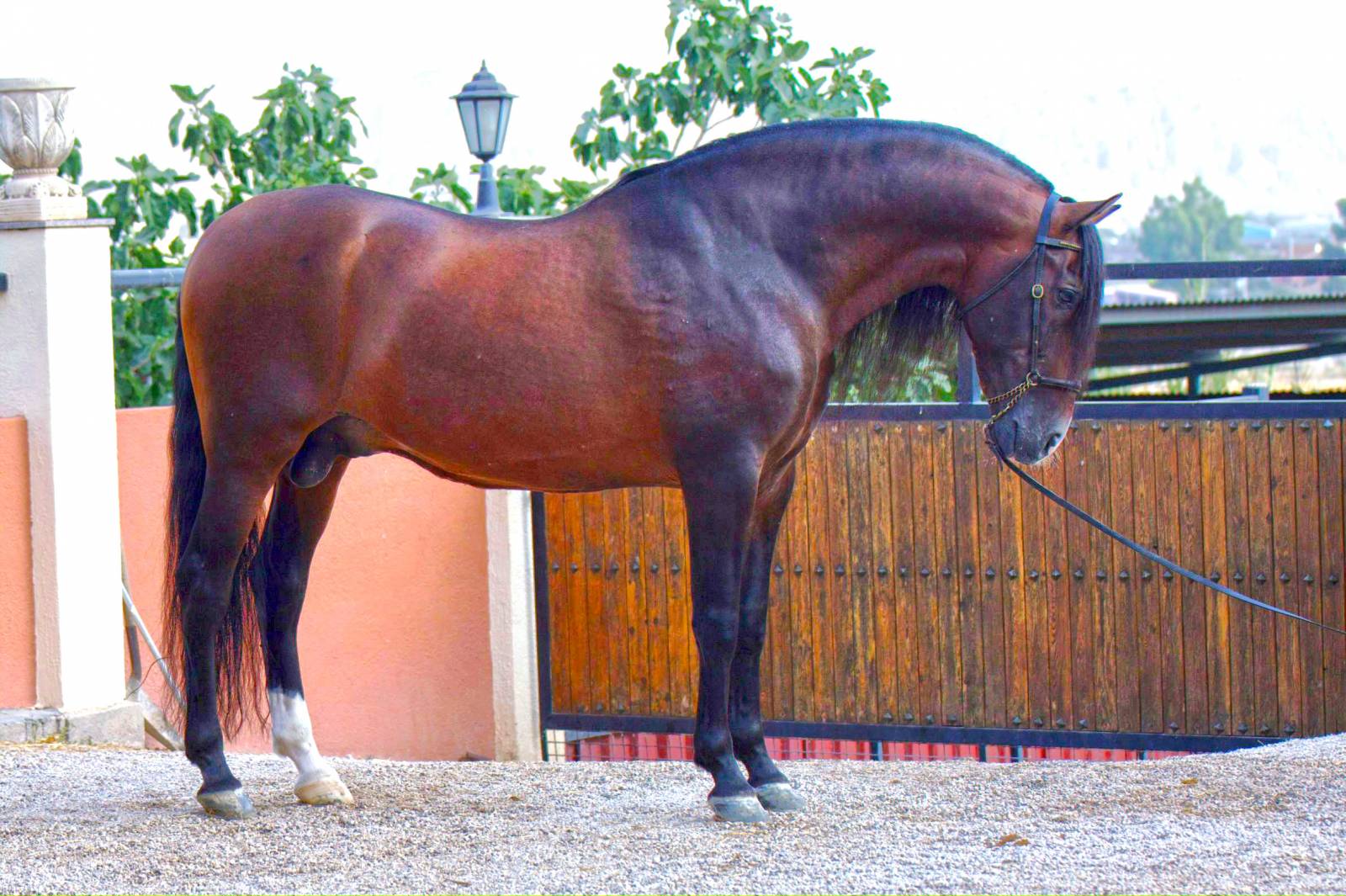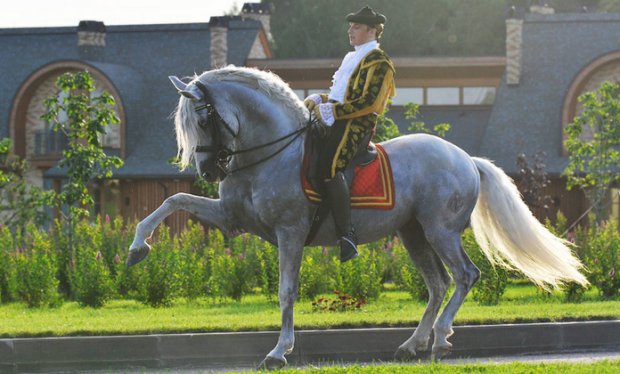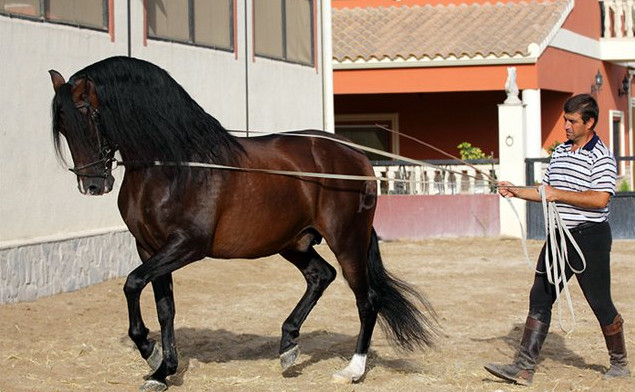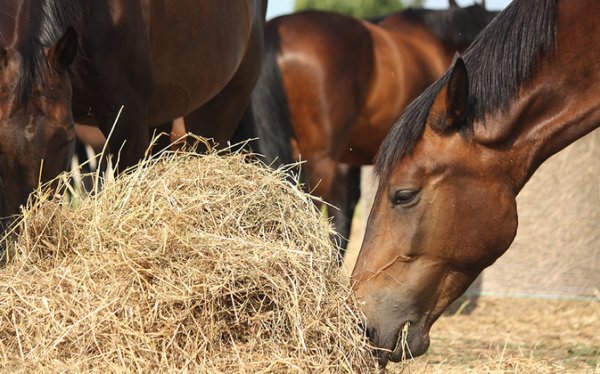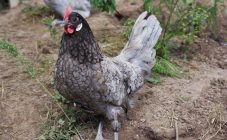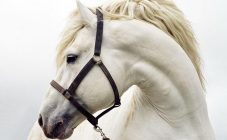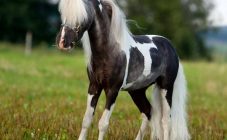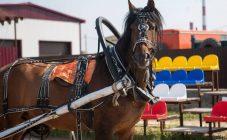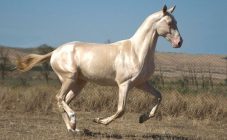Content:
The Andalusian horse is one of the most famous and sought-after breeds. Moreover, in the 16-17th century, these stallions enjoyed worldwide popularity. Representatives of this breed are the best for war and parades. Today the Spanish horse breed is the best representative for the high school of riding.
Andalusian horse breed: history of creation
The breed was named after the southernmost Spanish region called Andalusia. For approximately two to three millennia, the breed developed on the basis of local genetic material. During this time, the locals gradually improved the qualities inherent in local horses. Several factors influenced the development of the breed: selection of the bravest stallions; crossing with thoroughbred horses from Germany and France.
Finally, the Andalusian stallion was formed at the end of the European Middle Ages. By the end of the 15th century, the Spanish horse became the most famous among European breeds, and it was from then that the animals began to rapidly spread throughout the world.
The Andalusian horse, due to its physical and psychological characteristics, is ideal for riding. A century ago, military tactics placed great bets on the cavalry, and this required agile and obedient horses.
But, unfortunately, in the 19th century, the popularity of the Spanish mare declined sharply:
- The main advantages of the horse with technical progress have become irrelevant, the tactics of the battle have changed.
- In Europe, new breeds were developed that were more adapted to new military tactics. For example, the Arabian racehorse and English horseback became more prized by the military than the "Spaniard."
- During the occupation of Spain by Napoleonic troops, almost all horses, including tribal Andalusians, were taken outside the peninsula. Because of this, the number of purebred Andalusian has decreased.
- In 1830, there was a large-scale epidemic, after which the Spanish horses remained on the verge of extinction.
Description and characteristics of the breed
The Andalusian horse foal belongs to the factory riding category, the breed is designed for races on the hippodrome, sports horse racing and for equestrian tourism. Animals belonging to this breed are massive and large.
The following characteristic features are characteristic of a purebred suit:
- Height at the withers can vary from 1.5 m to 1.6 m, weight is approximately 400 kg.
- The following colors are inherent in the breed: black, gray, red, and much less often bay.
- The eyes of the "Spaniard" are expressive, almond, ears are small.
- The crest is truly outstanding, the neck is large with a smooth curve.
- Massive skull, humped nose.
- Shiny and very lush mane, bangs are thick and long.
- Elastic rounded abdomen, massive back and muscular shoulders.
- Legs are short, but strong and massive, the hooves are heavy.
- Dropped bushy tail.
Temper and character
Thoroughbred Andalusian horses are considered ideal in character. If the animal is properly raised, then even a small child can be a rider.
Representatives of this breed are characterized by a docile soft disposition, mutual to a good attitude, hardworking. Disobedience and even more aggression are rarely noticed behind them, mares and stallions are hardy and energetic.
Horses lend themselves well to gentle training. The trainer, as a rule, quickly finds common language with the animal. The horse obediently fulfills all the requirements of the rider.
Care and feeding
Content
When keeping a Spanish horse, the quality of the residence is of great importance.
Animals must live in a stable - a warm, bright, clean and well-ventilated room, where several animals are separated from each other by special partitions. The most suitable place for an Andalusian is a stall, since this breed is very freedom-loving and will not tolerate any particular restrictions on freedom.
Dennik must meet the following requirements:
- Each horse must have its own stall.
- The minimum admissible dimensions of the room: height from 3 m, and the total area of at least 9 sq.
- The box should be equipped with doors that swing outward.
- A well thought-out ventilation system must be present to ensure draft-free ventilation.
- Waterproof and cool floor, always matt. The surface is covered with a layer of peat or straw.
- There must be an extension where you can store all the inventory necessary for keeping the animal.
Nutrition
A horse's diet should include the following set of foods daily:
- beets, carrots, apples and potatoes;
- straw, oats and hay;
- representatives of legumes;
- pure water;
- rye and wheat.
When feeding your pet, you should pay attention to the following recommendations:
- Before each meal, the horse must be given clean water. On hot days, the optimal volume of clean water is 50 liters, and in winter about 30 liters.
- The food should be fractional, it is necessary to feed the horse often, but in small portions. An excess of calories inevitably leads to malfunctions of the digestive tract, and intestinal and stomach cramps are a consequence of regular overeating.
- Meals should not only be balanced, but also varied. Products should be rich in fiber, contain a high concentration of vitamins, macro- and microelements, minerals.
- It is worth refraining from feeding the horse if physical activity is coming up in the near future.
- Dry food should be calculated strictly by weight (2-3 kg of dry food is required for every 100 kg of weight).
Cleaning
Thanks to cleaning, it is possible to reduce the likelihood of damage to the skin of the animal by pathogens. In addition, quality care ensures overall cleanliness and shine. Cleaning is recommended daily.
Pet cleaning algorithm:
- The breed has become so popular due to its obedience, so there is no need to tie the animal during cleaning.
- Particular attention should be paid to the hooves - remove stuck grass, dirt, stones and sand. The most sensitive spot is the V-shaped frog.
- The wool is carefully passed with a rubber comb. This is necessary to remove pieces of plants, dust and other dirt. The comb is rotated round against the growth of the coat along the most developed (powerful) parts of the body.It is worth refraining from cleaning the bones, lines along the spine and legs.
- Use a stiff brush to go from neck to tail. This procedure is necessary to remove excess hair and dirt that remains after scrubbing.
- Using a soft brush, gently cleanse ears, nose and face. Treat areas where short-cut hair is located.
- Apply a damp washcloth to eyes, nose, ears and face. It is imperative to use separate washcloths for each part of the face.
- There should be two combs in the arsenal, one for the mane and the other for the tail. The hair should be free of dirt and any foreign objects.
The Andalusian horse is a unique breed that combines beauty, grace, power, humility and kindness. Keeping such an animal is not easy, and not cheap. The minimum cost for a thoroughbred Andalusian horse is 8000 euros. In order for an animal to feel comfortable throughout its life, it must be provided with decent housing, balanced and high-quality nutrition and cleaning. To avoid the development of various diseases, mares and stallions should be regularly examined by veterinarians.
